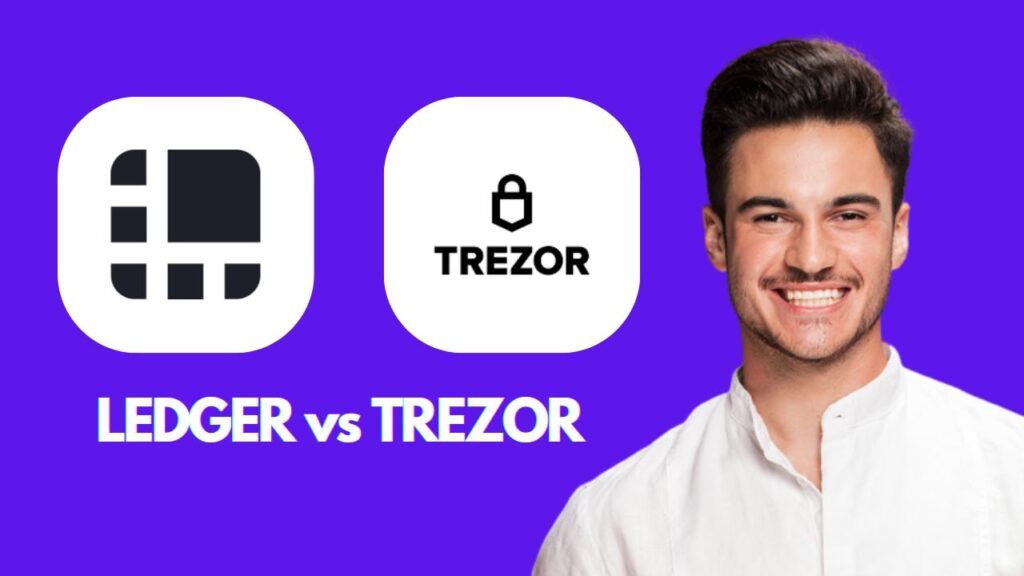Ledger vs. Trezor: Which Hardware Wallet is Right for You?
When it comes to securing cryptocurrency, hardware wallets are the most reliable option. Two of the most popular choices in the market are Ledger and Trezor. Both provide cold storage security but differ in features, security models, usability, and price. This comparison will break down the key aspects of Ledger and Trezor to help you decide which one best suits your crypto storage needs.
Overview of Ledger and Trezor
Ledger Overview
Ledger is a French company known for its secure element chip, which is also used in passports and banking systems. It supports over 5,500 cryptocurrencies and integrates seamlessly with DeFi, staking, and NFTs. The popular models include:
- Ledger Nano S+: Affordable and compact, but lacks Bluetooth.
- Ledger Nano X: Premium model that offers Bluetooth connectivity and increased storage.
Trezor Overview
Trezor, developed by Satoshi Labs in the Czech Republic, is fully open-source and does not utilize a secure element chip. Instead, its security relies on auditable firmware and multi-layer encryption. The popular models include:
- Trezor One: Affordable, simple, and highly secure.
- Trezor Model T: Premium model with a touchscreen and additional features.
Security Comparison
Ledger Security Features
- Secure Element Chip: Makes it resistant to physical attacks.
- Closed-Source Firmware: Reduces potential vulnerabilities.
- Ledger Live Requirement: Requires the use of Ledger Live to confirm transactions and manage assets.
- Bluetooth Connectivity: Available on the Nano X, but some users opt to disable it for enhanced security.
Trezor Security Features
- Fully Open-Source Firmware: Allows for public audits and transparency.
- No Secure Element: Relies on firmware encryption instead.
- Compatibility with Third-Party Apps: Works with applications like MetaMask without the need for Ledger Live.
- Shamir Backup Protection: Provides an extra layer of security by allowing the recovery key to be split into multiple parts.
Winner: The choice here depends on your preference; choose Ledger for secure hardware and Trezor for transparency and audibility.
Supported Cryptocurrencies
Ledger Cryptocurrency Support
- Over 5,500 Cryptocurrencies: Integrates well with staking, DeFi apps, and NFTs.
- Extensive Asset List: Has almost 1,100 pages dedicated to supported cryptocurrencies.
Trezor Cryptocurrency Support
- Supports Over 1,800 Cryptocurrencies: Does not have native support for NFTs but works with MetaMask for Ethereum-based tokens.
- Third-Party Wallets Needed for Some Coins: Coins like XRP may require third-party wallets.
Winner: Ledger, due to its larger selection of supported assets.
User Experience and Design
Ledger User Experience
- Compact USB Design: Features an OLED screen for navigation.
- Bluetooth Capability: Only available on the Nano X model but lacks touchscreen functionality.
Trezor User Experience
- Lightweight Plastic Build: Offers a larger screen on the Model T with touchscreen controls.
- User-Friendly Recovery Process: Easier onboarding and recovery makes for a better user experience.
Winner: Trezor Model T for its touchscreen and user-friendly interface.
Pricing Comparison
Ledger Pricing
- Ledger Nano S+: $80
- Ledger Nano X: $150
Trezor Pricing
- Trezor One: $70
- Trezor Model T: $220
Winner: Ledger, offering better value, especially with the Nano S+ at $80.
Recovery and Backup Features
Ledger Recovery Features
- 24-Word Recovery Phrase: Also known as the recovery seed phrase.
- Optional Paid Service: Offers Ledger Recover for seed phrase backup.
Trezor Recovery Features
- 24-Word Recovery Phrase: Similar to Ledger.
- Shamir Backup: Supports splitting the recovery key for extra security.
Winner: Trezor, for its Shamir backup support and flexibility in recovery options.
Additional Features
Ledger Additional Features
- Ledger Live Application: A native app for managing cryptocurrency that supports staking, DeFi, and NFTs.
- Bluetooth Functionality: Offers more convenience for mobile uses.
Trezor Additional Features
- Compatibility with Third-Party Apps: Works with MetaMask, Electrum, and other wallets.
- Passphrase Protection: Adds an extra layer of security.
Winner: Ledger, due to the robust features offered by the Ledger Live application.
Conclusion
Which hardware wallet should you choose?
- Choose Ledger if you want superior hardware security with a secure element chip, support for a vast array of cryptocurrencies, and a user-friendly interface through Ledger Live.
- Choose Trezor if you favor open-source security, the Shamir backup feature for extra protection, a touchscreen experience with the Model T, and don’t mind using third-party wallets for DeFi and NFTs.
Both Ledger and Trezor are top-tier cold wallets that cater to different types of users. Make your choice based on your specific needs and preferences. Let us know in the comments below which wallet you prefer, and thanks for reading!

 | Step-by-Step Upwork Verification Guide
| Step-by-Step Upwork Verification Guide | Step-by-Step Guide for Easy Withdrawals
| Step-by-Step Guide for Easy Withdrawals | Best Crypto Wallet Comparison for Security, Features & Price
| Best Crypto Wallet Comparison for Security, Features & Price